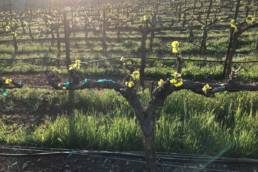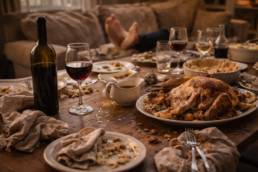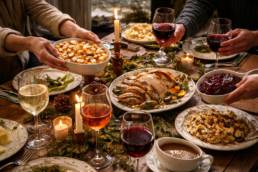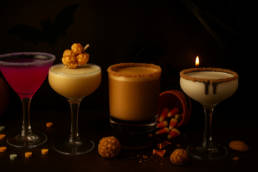FMN – June 2020 – Father’s Day
I never write about wines that I would not drink myself. If I find them inferior, unbalanced or just plain bad, I omit them rather than writing something derogatory about a producer or wine maker. There are wines, however, I drink for education purposes that may not be my preferred style. My tastes do fluctuate throughout the year, as many people’s do, but there are certain wines, areas and styles that I always seem to have an affinity for. That being said, I have decided to take this Father’s Day weekend to selfishly select some bottles for my personal consumption (some for education and some for therapeutic reasons).
Anyone who has attended one of my wine events knows that I have a torrid love affair with sparkling wines so I would be remiss to not have some bubbly to kick off the weekend. Partly due to my recent Spanish wine fetish and partly due to the extreme value, I’ve selected the Spanish traditional method sparkling wine, Cava; specifically the rosé version.
Many wrongfully assume that Cava must come from only the Penedès region of Spain. Although 95% of all this sparkling is produced here, there are over eight regions that now have the authority to use the Cava name. The rules of Cava have evolved to now allow Cabernet Sauvignon, Pinot Noir, Garnacha, Monastrell, and Trepat for rosé (as red grapes are not allowed in white Cava) and Parellada, Macabeo, Xarel-lo, Malvoisie, and Chardonnay for blanco. Like other sparkling wines they range from the fun entry level wines to the complex that comes with prolonged bottle aging on the lees. Whatever your preference, these wines offer the pleasures of a sparkling without breaking the bank.
Chenin Blanc remains one of my favorite white grapes. Incredibly versatile, this variety can successfully produce wines that are still or sparkling and bone dry to honey-like dessert nectar. Although all are amazing in their own right, I find the dry white Chenin, specifically of Savennières, ethereal.
Savennières is an appellation located in the Anjou section of the Loire Valley, France. This tiny area (140ha) located on the right bank of the Loire River has been appreciated for its viticulture since the Roman times. In the modern age, this Appellation produces only hand-harvested white wines from the Chenin Blanc variety. In my opinion, a sexy wine to accompany the first course for your Father’s Day feast.
A wine maker once told me that you have to be a masochist to make Pinot Noir, or at least enjoy sleepless nights. Perhaps understanding the difficulty in getting this grape just right or because its strength comes from its elegance, Pinot Noir remains my most respected red wine variety.
Although arguably Burgundy remains the spiritual home of this variety, Pinot has an amazing affinity for certain appellations of Oregon. I believe that the entrainment of cold ocean air via the Van Duzer Gap has a large part to play in the success of this variety in Oregon (and parts of California for that matter). Admittedly different from Burgundy, the wines made here are varietally true, have restrained alcohol and still have that ‘earthy’ element that defines well-made Pinot Noir.
Even though dad should be sitting on his keister and relaxing, no one touches dad’s grill but dad. In that event, I assume I will grill something red-and-dead to celebrate my ability to procreate. Alongside this grilled carnage one must have yet another wine to continue the celebration of admiration for dad and I choose the misunderstood Nebbiolo.
This infamous classic Italian variety has been documented in the Piedmonte for centuries. The variety has some things in common with Pinot Noir: being thin skinned, producing lighter colored wines and overtly express its vineyard terroir. Being a late ripening grape and commanding favorable market prices promote this variety to some of the best south, southwest vineyard sites in the region.
Classically built on the pillars of acid and tannin, traditional Nebbiolo would be almost unapproachable for at least a decade of bottle age. The crazy high tannins came from extended maceration times to attempt to extract more color from the grape skins and in doing so, imparted more tannin as well. Modern practices produce wines that are better integrated after only a couple years of bottle age. Which style produces better wines remains an argument between traditional and modern winemakers throughout the Piedmonte today.
Being more than a few courses and a few glasses into the evening, now the time comes to take one’s leave for a fortified ‘contemplation’ wine. Although I honestly have yet to meet a fortified (added neutral grape spirit) wine that I didn’t like, one does rise above the others, Madeira.
Named after the Portuguese owned island located about 750 km off west coast of North Africa, these wines are a special and unique treat. Because they have been heated (either by estufagem ovens or naturally in storage buildings) and oxidized, they have distinct aromas and flavors that could be considered faults in other wines. The most common styles in ascending levels of sweetness are Sercial, Verdelho, Boal and Malvasia (Malmsey). The heating and oxidation processes also protect the wine even after opening giving them a shelf life of a Twinkie.
So now that your belly is full and your liver challenged, you can look back on a wonderful day of blissful excess. This year we’ve successfully traded the ‘dad-ism’ of, “money doesn’t grow on trees” for “waste not, want not”. Although your festivities and choices may vary a bit from my own, I truly wish a happy, safe and soulful Father’s Day for you all.
Suggested Wines
Biutiful Cava Rosé NV Requena, Valencia, Spain $10.99
This 100% Grenache has small persistent bubbles and aromas of tropical citrus and red fruits. The palate has a citrus like acidity with a perception of dryness (surprising at 9g/L residual sugar). Flavors of barely ripe red fruit and tangerine dominate. The slightly aggressive mousse along with the acidity causes a mouth-watering sensation that cries for food. Serve with salty preserved meats, creamy cheeses (brie) or celebrating mask-less consumption.
Domaine des Baumard Savennières 2016 Anjou, Savennières, France $36.99
The wine has complex layered aromatics of waxed orchard fruit (pear, apple), citrus (tangerine), a slight floral component, and a smoky minerality. The palate is bone dry with evident crescendo-like acidity, and a viscous mouth-coating medium plus body. With obvious developing characteristics, this wine could shelf for a decade or more but remains a pleasure drinking young. Pair with pan seared scallops, goat’s milk cheeses, and grilled trout.
Soléna Pinot Noir 2018 Willamette Valley, Oregon $22.99
This exemplary Pinot Noir demonstrates classic aromatics of red fruit (cherry, raspberry), sweet baking spice, tea leaves and a slight anise quality. The palate is dry with bright tart acidity and a fine grained tannin structure with flavors mirroring the nose along with cranberry. The finish is tart, slightly smoky and earthy. Put this wine with pork tenderloin, mushroom risotto, or seared duck breast.
Damilano Marghe Nebbiolo 2016 Langhe, Piedmonte, Italy $25.99
The light garnet color gives way to aromatics of red fruit (raspberry, currant), purple flower (iris or violet), sweet spice (clove or allspice) and an earthy note (wet autumn leaves). The palate is dry with evident upfront acidity and prevalent, ripe silty tannins. There are flavors of raspberry, currant, woody thyme, and baking spice. The alcohol is well in check and finishes slightly astringent with earthy red fruit. Pair with grilled meats, Bolognese, and game stews.
The Rare Wine Company Madeira Malmsey Madeira, Portugal $65.99
Looking at the color, one would find it hard to believe that this wine comes from a white variety. The nose carries over aromas of balsamic, caramelized sugar (toffee), treacle, espresso and moist pipe tobacco. The palate unveils a medium sweetness with a well-balanced mouth-watering acidity. The harmonious sweet and savory flavors are truly something to experience. This wine pairs extremely well with pecan pie, toffee desserts, and the signing of the Declaration of Independence.




